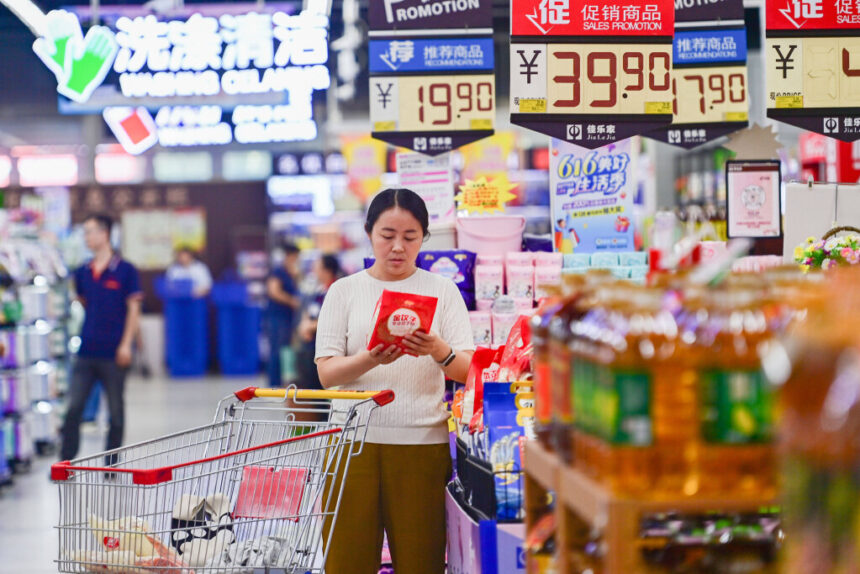BEIJING – China, the world’s second-largest economy, faces a turning point. Government efforts to drive up consumption, long-standing claims about currency meddling, and warning signs of stagflation have raised doubts about how stable the country’s growth path really is.
In recent years, China’s economy has exhibited both remarkable growth and perplexing challenges. The government has implemented various strategies and policies to navigate its economic landscape, from fiscal stimulus to regulatory reforms. However, understanding the intricate dynamics of China’s economy requires a closer look at the factors influencing its trajectory.
As global investors react to China’s decisions, many wonder whether Beijing is building a shaky economic foundation through artificial demand and strict currency controls. The stakes for the wider financial system are high.
Premier Li Qiang has made ramping up household spending a central part of China’s 2025 economic agenda. In his March address to the National People’s Congress, Li mentioned consumption 31 times, ten more than last year.
To boost household spending, the government has also introduced measures such as cash handouts to families, which are designed to stimulate immediate consumption. These initiatives aim to create a sense of financial security among consumers, encouraging them to spend rather than save. A detailed analysis of these policies reveals their mixed effectiveness in achieving sustained economic growth.
Government-Driven Consumption: Can It Last?
The government’s focus comes as property markets struggle, consumer demand slows, and trade fights with the United States heat up. To tackle these problems, officials have launched a series of support measures, like lower interest rates, increased cash flow, and more fiscal spending to encourage people to buy.
Furthermore, the economic repercussions of the pandemic have altered consumer behavior significantly. Many households are now prioritizing saving for emergencies rather than making discretionary purchases. This shift in mindset poses a considerable challenge to the government’s efforts to boost consumption.
In May 2025, China cut its seven-day reverse repo rate by 10 basis points to 1.40%. Policymakers also moved to make borrowing easier. Citi analysts called these steps “tactical,” meaning to soften the blow from US tariffs and build confidence before trade talks. But many critics say this push for higher consumption could be hiding deeper problems.
Chinese households spend less than 40% of GDP, while the global norm sits close to 60%. Many economists have urged Beijing to shift towards consumer-led growth, but change has been painfully slow. Instead, the government prefers subsidies, tax cuts, and infrastructure projects to lift demand. These methods often inflate headline numbers without tackling the real issues.
The reliance on government spending to drive growth has raised questions about the long-term sustainability of such a model. Critics argue that without addressing underlying structural issues, including income inequality and labor market inefficiencies, any temporary boosts in consumption will be short-lived. An exploration of these structural reforms is essential to understanding the future of China’s economy.
Andrew Xia, chief economist at Shangshan Capital Group, pointed out that with export-led growth less reliable, China must count on local demand. Without reforms to improve social safety nets or move resources more efficiently, these stimulus efforts might only delay bigger troubles.
China’s Currency Tactics: An Ongoing Source of Friction
China’s property sector highlights these challenges. Once making up nearly one-third of GDP, real estate has slumped since 2021 due to oversupply and bankrupt builders. Efforts by the government to steady the market have had little effect—new home prices keep sliding, which fuels worries about deflation.
The real estate market’s instability has led to increased scrutiny of the government’s response. Investors and consumers alike are concerned about the potential for a housing bubble or further declines in property values. Learning from past crises, such as the 2008 financial meltdown, China is under pressure to devise comprehensive solutions that can restore confidence in the real estate sector.
Morgan Stanley analysts believe that fixing the sector would take a rescue plan about five times bigger than current stimulus levels, similar to what the world saw in 2008. Without decisive help, problems in real estate keep hurting both consumer confidence and economic growth.
China’s approach to its currency, the renminbi (RMB), remains a hot-button issue, especially with the United States. For years, critics have said that China keeps the RMB undervalued to help exporters. The US Treasury officially labelled China a currency manipulator in August 2019, after it let the yuan drop below the 7:1 rate against the US dollar.
The complexities of currency management are also intertwined with China’s strategic economic decisions. The ongoing trade tensions with the United States have heightened the stakes, as fluctuating currency values can dramatically impact trade balances. A historical perspective on currency policies and their implications for international trade can provide invaluable context for current debates.
This move came right after more US tariffs and was seen as a countermeasure. The US removed the label in 2020, but many still believe China steps in to manage its currency’s value.
Navigating challenges
Before 2005, China kept its currency fixed to the US dollar. Under outside pressure, it later allowed the RMB to move within a managed range. The debate over currency control continues, as both sides watch how these choices affect trade, investment, and the world economy.
The global economy is closely watching how China navigates these challenges, as its decisions can have ripple effects worldwide.
Economists and analysts are particularly interested in how China will balance growth with the need for reforms that address systemic issues. Discussions around the potential for a more market-driven approach to currency valuation are ongoing, with implications for both domestic and international stakeholders.
As China continues to evolve, keeping abreast of its economic policies and shifts in trade relations will be critical for investors and policymakers. The intricacies of its economic environment will require a nuanced understanding of both domestic and international factors influencing its growth trajectory. Engaging with expert analyses and forecasts can provide valuable insights into potential developments in China’s economy.














